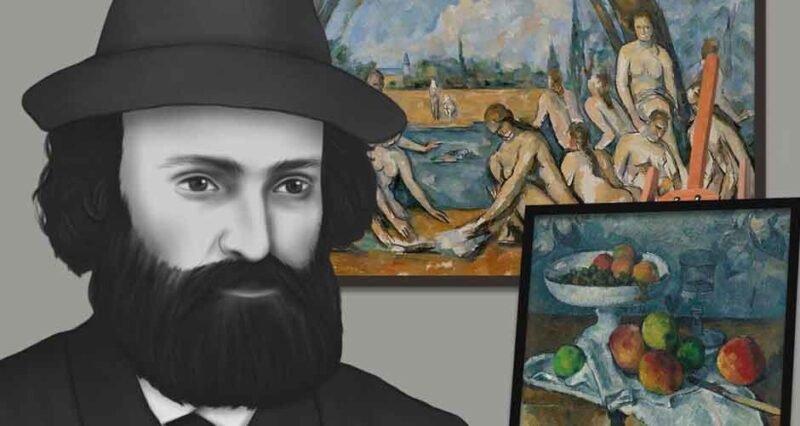
The artistic trajectory of Paul Cézanne, a seminal figure in the transition from 19th-century Impressionism to 20th-century Cubism, is a narrative of profound evolution and personal reflection. His journey from the dark, emotionally charged early works to the light-filled, abstract compositions of his later years is not just a story of artistic development but also a testament to the personal struggles and triumphs that shaped him. For art enthusiasts and historians, delving into Paul Cezanne reproductions offers an insightful window into this evolution.
Born in 1839 in Aix-en-Provence, Cézanne’s early life was marked by a complex relationship with his father, a wealthy banker who desired a conventional career path for his son. Despite his father’s wishes, Cézanne pursued his passion for art, a decision that set the stage for a lifetime of artistic exploration and personal rebellion.
Cézanne’s early works are characterized by a somber palette and heavy impasto, reflecting the influence of the Romantic movement and his own internal struggles. During this period, his paintings often depicted scenes of violence and melancholy, mirroring his turbulent emotional state. The heavy application of paint added a physical weight to these works, further emphasizing their emotional intensity.
The turning point in Cézanne’s artistic journey came with his exposure to the Impressionists in Paris. This interaction introduced him to a new world of color and light, but Cézanne never fully embraced the Impressionist style. Instead, he began a lifelong process of synthesizing various influences to create something wholly unique.
Cézanne’s middle period marked a gradual shift from the dark tones of his early work to a brighter, more nuanced palette. He began to experiment with looser brushstrokes and a lighter application of paint, exploring the interplay of light and color. However, unlike his Impressionist contemporaries, Cézanne was not content to simply capture the fleeting effects of light on the surface of objects. He sought to understand and depict the underlying structure of the natural world.
This quest led to what is perhaps the most significant evolution in Cézanne’s style: his move towards abstraction. In his later works, Cézanne broke down objects into their basic geometric forms, using color and light to reconstruct them on the canvas. This approach was not an attempt to distort reality but to understand and convey its essence more profoundly. He famously stated that he wanted to “treat nature by the cylinder, the sphere, and the cone.”
The culmination of this abstract approach is most evident in his series of paintings of Mont Sainte-Victoire and his late still lifes. In these works, Cézanne transcended traditional perspective, creating compositions that are at once flat and dimensional, static and dynamic. These paintings are not just representations of the physical world but reflections of Cézanne’s deep contemplation of the nature of reality.
Cézanne’s personal life, particularly his friendship with the writer Émile Zola, also played a significant role in his artistic development. Zola’s naturalistic approach to literature paralleled Cézanne’s desire to capture the essence of his subjects. However, their relationship soured after Zola published a novel that Cézanne believed portrayed him in a negative light. This betrayal deeply affected Cézanne and coincided with a period of intense self-examination in his work.
Cézanne’s influence on the art world cannot be overstated. His abstract approach laid the groundwork for the development of Cubism and profoundly impacted artists such as Pablo Picasso and Henri Matisse. His quest to capture the essence of nature changed the course of art history, bridging the gap between Impressionism and the modern movements that followed.
In examining Cézanne’s body of work, particularly through Paul Cezanne reproductions, one can trace the arc of his artistic journey. From the dark, introspective early paintings to the bright, abstract compositions of his later years, Cézanne’s evolution as an artist is a mirror to his evolution as a person. His work reflects a lifelong quest for understanding, not just of the world around him but of his place within it.
Cézanne’s legacy is a testament to the power of art to reflect and shape our understanding of the world. His journey from darkness to light, from representation to abstraction, speaks to the universal human experience of growth and change. As we view his works, whether in galleries or through high-quality reproductions, we are invited to embark on a journey of our own, to see the world through the eyes of a master and to find our own understanding within his vision.

